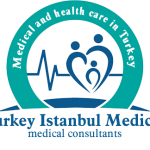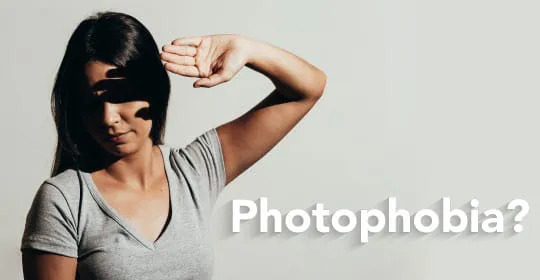What is Photophobia (Light Sensitivity)?
Photophobia is an eye condition in which the eyes are affected by bright light and can cause pain in the eyes.
Light sensitivity can be associated with many different medical conditions. It can also be seen as a result of temporary events that occur in the eyes during a medical examination.
Photophobia usually occurs as a symptom of a problem. Dryness in the eyes, migraine headaches, swelling in the eyes are associated with light sensitivity. In addition, pain occurs when exposed to sunlight or indoor light.
What are The Causes of Photophobia (Light Sensitivity)?
Photophobia is a complex condition that can be caused by many different reasons.
Here are the main reasons that can lead to photophobia:
Eye Diseases:
Eye diseases are among the most common causes of photophobia.
The following conditions can lead to sensitivity to light:
Cornea Diseases:
Corneal infections, injuries or abrasions can cause photophobia.
For example:
- Keratitis (Inflammation of The Cornea)
- Or Corneal Abrasion (Scratching of The Cornea)
Conditions such as these can result in extreme sensitivity to light.
Uveitis:
Uveitis, an inflammation of the middle layer of the eye, causes pain in the eye and sensitivity to light.
Glaucoma:
Glaucoma, characterized by damage to the optic nerve as a result of increased intraocular pressure, can cause photophobia.
Cataract:
Cataracts, which occur when the lens of the eye becomes cloudy, can cause abnormal refraction of light and discomfort.
Neurological Diseases:
Neurological diseases can also cause photophobia.
Migraine:
Migraine is one of the most common neurological causes of photophobia. During a migraine attack, patients usually show extreme sensitivity to light.
Meningitis:
Meningitis, an inflammation of the brain and spinal cord membranes, can cause severe headaches and photophobia.
Brain Tumors:
Brain tumors can cause photophobia by creating pressure on brain tissue.
Multiple Sclerosis:
Multiple sclerosis, a disease of the central nervous system, can cause visual disturbances and photophobia.
Infections and Inflammation:
Viral and bacterial infections can cause photophobia by causing inflammation in various parts of the body:
Sinusitis:
Sinusitis, an infection of the sinus cavities, can cause pain and sensitivity to light, especially in the facial area.
Conjunctivitis:
Inflammation of the outer surface of the eye, conjunctivitis (pink eye), can result in eye discomfort and sensitivity to light.
Medications:
Some medications can have photophobia as a side effect.
Psychiatric medications and some antibiotics in particular can cause this condition:
Antidepressants:
Some types of antidepressants can cause photophobia.
Antibiotics:
Some antibiotics, such as tetracycline, can increase sensitivity to light.
Retinoids:
Retinoid medications used to treat acne can also cause photophobia.
Systemic Diseases:
Some diseases that affect the entire body can also cause photophobia:
Lupus:
Lupus, a disease in which the immune system attacks its own tissues, can cause many symptoms, including photophobia.
Diabetes:
In advanced stages of diabetes, complications in the eyes may develop. And this may lead to photophobia.
Other Factors:
Other factors that can cause photophobia include:
Eye Strain:
Prolonged exposure to blue light from sources such as computer screens can cause eye strain and photophobia.
Contact Lens Use:
Incorrect or prolonged use of contact lenses can cause irritation to the surface of the eye and sensitivity to light.
What are The Symptoms of Photophobia (Light Sensitivity)?
Since the problem is related to vision, the symptoms occur mostly in the eyes and the area around them.
Problems in the eyes can sometimes be unilateral or bilateral.
There is no specific age range for experiencing photophobia.
This disorder can occur in people of all ages.
Eye Discomfort:
Along with sensitivity to light, the eyes experience;
- Burning,
- Stinging and itching.
Depending on the level of discomfort, the intensity of the discomfort in the eyes may vary.
Discomfort in the eyes;
- It can also cause eye redness,
- Eye fatigue, swelling of the eyes,
- and eye pain.
Eye Watering:
Dry eyes, especially dry eye syndrome, can increase photophobia. And itching, hyperemia can cause sensitivity.
Over-the-counter artificial tears can provide lubrication. And can relieve light-related discomfort.
Blurred Vision:
The challenging effects of photophobia on the eyes in excessive light can blur vision.
Nausea and Dizziness:
A decrease in vision quality along with discomfort from light can cause dizziness and nausea.
Need to Squint:
One of the defense mechanisms of eyes that are bothered by intense light is to squint their eyelids. If discomfort reaches extreme levels, the need to close the eyes completely may be felt from time to time.
Headache:
Light sensitivity can trigger headaches, and headaches can trigger light sensitivity. There is a cyclical mechanism of influence between these two.
Neck Stiffness:
Deterioration of vision generally creates nervous strain and tension. As a result, neck stiffness may be felt.
Diagnosis of Photophobia
Photophobia can be easily diagnosed by the medical history given by the individual to the doctor.
However, what the doctor actually does here is to identify diseases that may cause photophobia.
For this, the disease is identified from the detailed medical history given by the patient.
Then, a diagnosis is made with an appropriate physical examination.
After these, special tests can be performed to identify brain and eye diseases that may cause photophobia.
Additional examinations that can be used can be listed as follows:
-
Slit Lamp Eye Examination:
This method is a method that doctors do not give up using and is used to examine eye diseases and the condition of the eye. A special microscope with light is used in this method.
-
Magnetic Resonance Imaging (MRI):
MRI is used to obtain detailed images of the eye area and brain. It is a method that uses strong electromagnetic fields.
-
Tear Analysis:
Tear analysis is a method used to check for rare causes of photophobia, especially dry eyes, and helps diagnose some diseases.
How is Photophobia (Light Sensitivity) Treated?
Avoiding sunlight and dimming indoor lighting are some home remedies for photophobia. Closing the eyes or covering the eyes with colored glasses can also provide relief.
If you experience light sensitivity or sensitivity, your specialist doctor may recommend the following:
- Medication or rest for migraine
- Eye drops that reduce inflammation for scleritis
- Antibiotics for conjunctivitis (red eye disease)
- Eye drops for dry eyes
- Antibiotic eye drops for corneal abrasions
- Anti-inflammatory drugs, bed rest and plenty of fluids
- Antibiotics for bacterial meningitis
Home Solutions for Photophobia (Light Sensitivity)
Gradually Increase Light Exposure:
Avoiding the dark or wearing sunglasses indoors can increase light sensitivity. Keeping the lights on even at lower levels helps alleviate the problem.
Get Rid of Fluorescent Bulbs:
The invisible flicker and blue light of fluorescent lighting can increase photophobia and light sensitivity. Warm-toned LED bulbs offer a natural and preferable alternative.
Open Your Blinds Fully:
High-contrast light patterns can worsen brain activity. Opening or closing shades completely can eliminate stray light and unexpected eye contact.
Check Your Medication:
While not exhaustive, some health experts have linked photophobia to common medications used for a variety of conditions.
Wear Polarized Sunglasses Outdoors:
If you must go out in the sunlight, wear polarized sunglasses to reduce glare, glare, and sunlight.
Check Your Contact Lenses or Eyeglasses:
Eye strain can make photophobia worse. However, it can be treated by wearing clean contact lenses or glasses to prevent straining your eyes. Inflammation or itching can increase light sensitivity, so make sure your lenses are clean.
Stay Away from Your Computer or Mobile Device:
Computer vision syndrome affects those who spend long periods of time on digital devices. It manifests itself as eye strain, headaches, and sensitivity to light. Take regular breaks to relieve symptoms. Or put devices aside occasionally.
Eye Drops:
Dry eyes, especially dry eye syndrome, can increase photophobia. And itching, hyperemia can cause sensitivity.
Over-the-counter artificial tears can provide lubrication. And can relieve light-related discomfort.
Find Ways to Reduce Stress:
Migraine-related photophobia can be associated with psychological disorders such as:
Depression, Anxiety, Stress and Worry:
Can trigger light sensitivity and pain episodes.
Engaging in Relaxing Activities Such as Yoga or Listening to Music:
Can help relieve symptoms and improve overall well-being.

